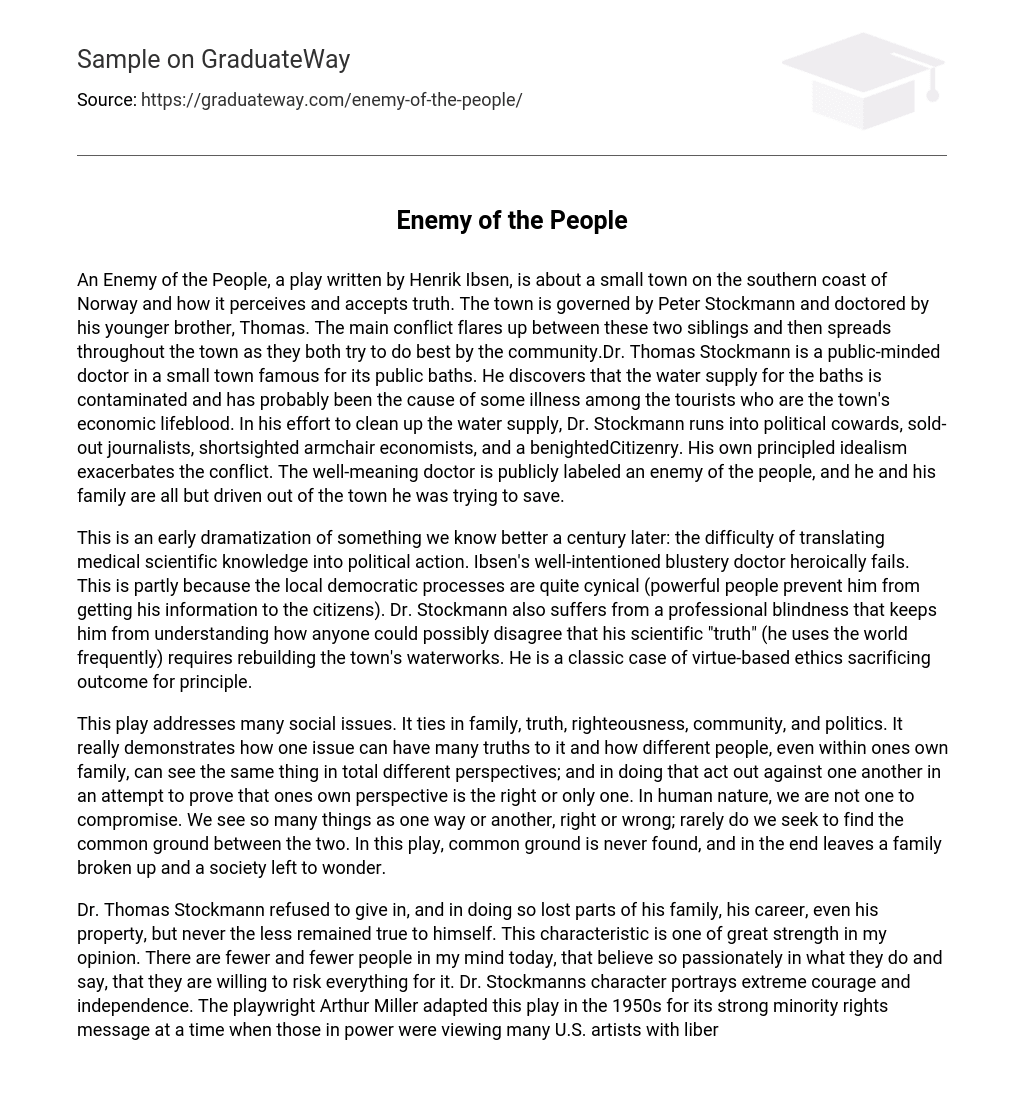The play An Enemy of the People by Henrik Ibsen examines how truth is perceived and accepted in a small town located on Norway’s southern coast. In this town, Peter Stockmann holds power as its ruler while his younger brother, Thomas, serves as the town’s doctor. The main conflict emerges between these two siblings and gradually affects the entire community as they both seek to act in the town’s best interest.
Dr. Thomas Stockmann, a doctor known for his dedication to the public, lives in a small town famous for its renowned public baths. One day, he discovers that the water supplying these baths is contaminated and could be responsible for illnesses among the tourists who are the main source of income for the town. As Dr. Stockmann tries to fix this problem and purify the water supply, he encounters politicians lacking bravery, journalists who have compromised their integrity, economists with limited foresight, and an uninformed population. Unfortunately, his own unwavering idealism only intensifies the conflict further. Instead of being acknowledged for his good intentions, the well-meaning doctor is publicly denounced as an enemy of the people, leading to him and his family being isolated from the very town he aimed to save.
This is an early dramatization of a challenge that is still familiar to us today, even after a century: the struggle to translate medical scientific knowledge into political action. Ibsen’s doctor, with good intentions and a strong personality, attempts to succeed heroically but ultimately fails. This is partly due to the cynicism of the local democratic processes, as powerful individuals hinder his efforts to disseminate information to the citizens.
Dr. Stockmann possesses a professional blindness that prevents him from comprehending why anyone would object to his scientific “truth” and the necessity of reconstructing the town’s waterworks. He exemplifies virtue-based ethics, prioritizing principles over outcomes.
This play addresses multiple social issues that encompass family, truth, righteousness, community, and politics. It effectively portrays the existence of various perspectives within a family, highlighting how individuals might perceive the same situation differently. Consequently, these differing viewpoints can lead to conflicts as individuals strive to prove their perspective as the correct or only one. Unfortunately, human nature tends to resist compromise, often categorizing things as completely right or wrong without seeking a middle ground. The play consistently fails to find common ground, resulting in a fractured family and a society left questioning its values.
Dr. Thomas Stockmann exhibited immense strength by refusing to surrender, despite losing his family, career, and property. However, he remained steadfast in his beliefs, demonstrating great courage and independence. Nowadays, it is rare to find individuals who possess such unwavering passion and are willing to sacrifice everything for their convictions.
During the 1950s, playwright Arthur Miller adapted this play to highlight its powerful message on minority rights. This was a time when those in power considered American artists with liberal politics as enemies of the people. Miller maintains Dr. Stockmann’s unwavering idealism and distrust of the majority, but he reduces and tones down his lengthy rants, making it easier to differentiate his pro-minority stance from arguments that suggest genetic superiority.





